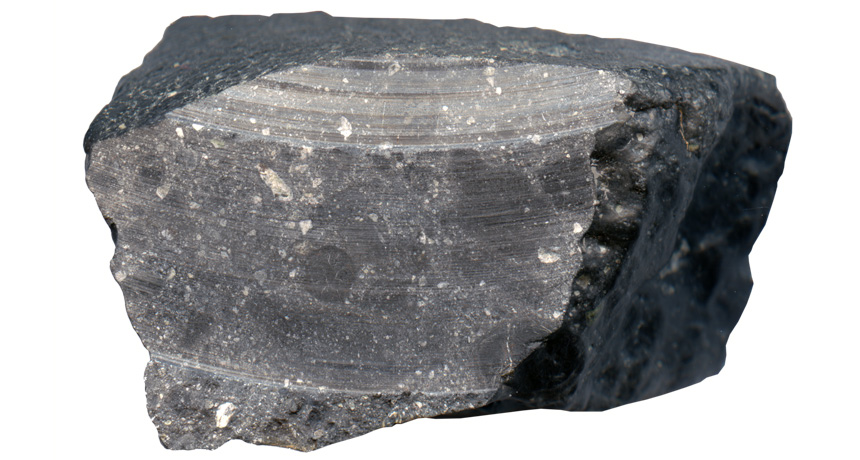Ancient Martian meteorite preserves chunks of planet’s early crust
Rock could reveal what Mars was like 4.4 billion years ago

ANCIENT CRUST The meteorite NWA 7533 is embedded with crystals that date back to 4.4 billion years ago, when the Martian crust first solidified.
Luc Labenne
Pieces of Mars’ original 4.4-billion-year-old crust have shown up in fragments of a smooth black rock recovered in the Sahara Desert, researchers report November 20 in Nature. The meteorite pieces are among the oldest planetary artifacts ever discovered and could provide insight into surface conditions on Mars during its infancy.
Along with the other planets in the solar system, Mars formed more than 4.4 billion years ago. But you’d never know that by studying meteorites that got blasted off the Red Planet before crash-landing on Earth. Most of the roughly 125 Martian meteorites on record formed less than a billion years ago, providing clues to Mars’ recent geological activity but not what it looked like in its youth. The only senior citizen in the Martian collection is Allan Hills 84001, the 4.1-billion-year-old meteorite best known for the discredited claim that it contains fossilized bacteria (SN: 5/8/10, p. 10).
Carl Agee, a meteorite researcher at the University of New Mexico in Albuquerque, knew he had something special when a meteorite collector gave him samples of a glassy dark stone, nicknamed Black Beauty by a Moroccan dealer who sold it for $50 per gram. In February, Agee and his colleagues reported that they used a traditional method of dating, measuring the ratio of rubidium to strontium, to estimate the rock’s age at 2.1 billion years (SN: 1/26/13, p. 10).
Munir Humayun, a Florida State University geochemist who received a sample from a different collector, decided to dig a bit deeper. He saw that the rock contains small crystals called zircons that form when magma solidifies. He and his team probed the age of five individual zircons using a new technique (SN Online: 7/24/13) that measures how much of a particular uranium isotope has radioactively decayed into lead. Humayun and colleagues now report that the crystals yielded an age of 4.4 billion years, making the rock a remnant of the very first Martian crust. “It’s comparable in age to the oldest rocks we know of from the moon and Earth,” Humayun says. He adds that the fragments could now sell for at least $10,000 a gram.
The finding suddenly shifts the meteorite, officially named both NWA 7533 and NWA 7034 even though Agee’s and Humayun’s samples came from the same rock, from a record of Martian evolution to an indicator of the planet’s initial conditions. Agee, who accepts the older age, reported in the February study that the meteorite contains more than 10 times as much water as any other Martian sample, a strong sign that the Red Planet was originally quite blue. His team also showed that the meteorite is the first with a composition similar to that of rocks analyzed by NASA’s fleet of robotic Mars explorers. The crust of the planet’s southern hemisphere is much older than the northern crust, yet for some reason scientists have had trouble finding meteorites from that region.
Both Agee and Humayun are investigating individual crystals and grains of the fragments to determine the composition of the Martian crust and of the gases that may have passed through it to form the planet’s first atmosphere. Agee says that at that time, Mars may have had the warm temperatures, thick atmosphere and liquid water it would have needed to support life. However, it was also getting pelted by asteroids over a period of hundreds of millions of years, which could have vaporized water and heated the surface to inhospitable extremes. Agee doesn’t expect to find fossils, but he says that “if you were going to look for evidence of Martian life, these rocks would be the place to start.”







